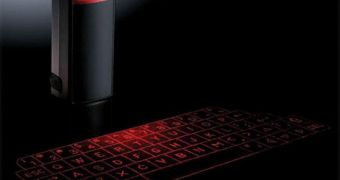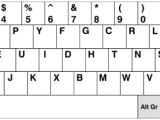The QWERTY keyboard standard was first introduced in 1874 by the Remington Number 1 typewriter produced by the Remington & Sons manufacturer and is currently used in the vast majority of keyboards on digital personal computers. But why is this, what difference does it make whether or not the keys are disposed in an orderly fashion or at random? As it turns out, the keys on a keyboard are placed in such a way that the typing speed is maximized.
The story goes that when Christopher Sholes first designed the Remington Number 1 typewriter, the mechanisms put in motion by the keys being pushed at high speed rates would collide with each other and they would ultimately jam. So in order to solve this problem, Sholes disposed the keys in such a manner that the typists' speed would be considerably reduced. The story is somehow hard to believe, especially while considering that the QWERTY layout is almost perfect, but this article is not trying to test its verisimilitude.
The greatest competitor of the QWERTY standard is the Dvorak layout which has the keys disposed in a complete different way from that of the QWERTY layout, having the role of maximizing the alternative use of both hands while typing and to minimize the traveling distances between each finger. All the common letters are placed in a row in the middle of the keyboard, allowing the typist to use them without having to move their fingers too often.
Additionally, all the consonants are placed in the right side of the keyboard while the vowels are disposed in such a way that they are accessible to the left hand, thus leaving a handful of words in the English dictionary that can be typed with one hand. Take the QWERTY keyboard standard for example. Words such as 'minimum' and 'pumpkin' can be typed with the right hand only.
Some claim that the QWERTY layout is slower and less efficient than the Dvorak layout, although a study conducted in 1956 showed that the two basically allow roughly the same typing speed rate, thus the QWERTY layout became standard just by luck.

 14 DAY TRIAL //
14 DAY TRIAL // 
